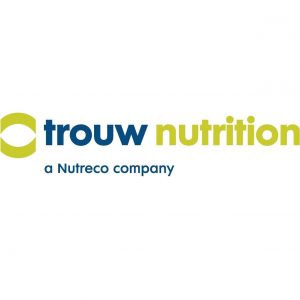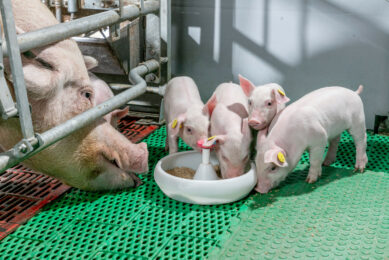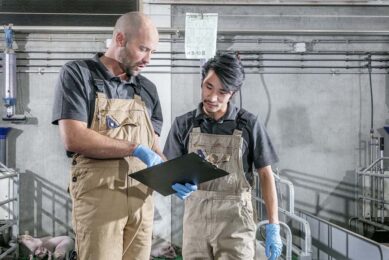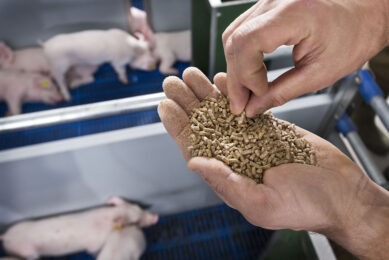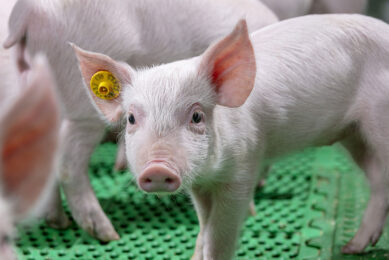The benefits of turning pigs into digital twins
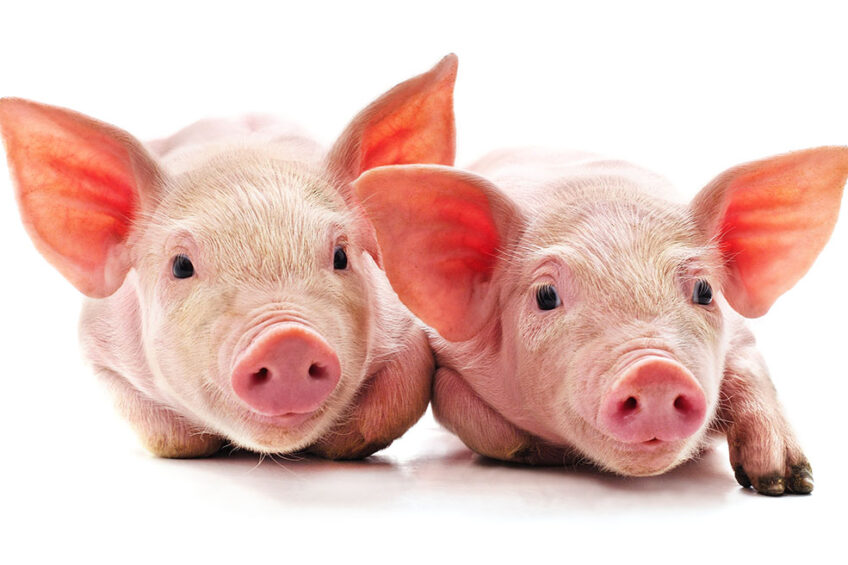
Animal models are evolving from simple calculators to true simulation models and digital copies (twins) of animals. This evolution in technology and science allows pig producers to accurately predict outcomes and be better prepared for changing market conditions.
Animal models are software tools that calculate and optimise important outputs (e.g. daily weight gain and feed intake) from inputs (e.g. nutrient supply, diet composition and animal characteristics). Over the last few decades, animal models have become smarter and more advanced, able to process more and different data inputs as well as make them more precise. Combined with increased knowledge about the biology of, for example, growth, digestion processes and nutrient uptake of animals, we are now moving from simple calculations based on static data to more accurate predictions and simulations of the real world.
For pig farmers and swine integrators, these smart models have a range of benefits for their daily decisions and operations. This is because the models can run any number of simulations (calculations) and give users the best possible scenarios to, for example, reduce feed costs, be more sustainable or optimise pork concepts.
Value of digital copies
Simulation modelling is often associated with the term “digital twins”. Digital twins are advanced predictive models that recreate a digital copy of a physical object, process or system. These models are used in many different industries to analyse performance issues or run virtual scenarios using real-time data. The models are often backed by artificial intelligence algorithms and machine learning (allowing feedback loops to make the model better). The data and discoveries from these simulations can subsequently be applied to the real-world object.
Digital twins are used, for example, in automotive and manufacturing industries. However, application in living things such as plants and animals is more complex. Nevertheless, we see that the concept of digital twins is already being applied in crop farming, to predict potential yields of different crop varieties throughout the growing season, continuously incorporating the latest information on weather trends and pest pressure, for example.
These data can be derived from sensors in the field or derived from other data sources. In farm animals, increased use of optimisation and simulation of processes can be seen, inspired by the digital twin concept.
Historic and new data
To create digital twins for pigs, fundamental knowledge on how a pig functions (and digests feed, for example) is crucial for building an accurate model. Additionally, the standard animal and nutritional data is needed, which can be derived from the management system and feed formulation software. This vast amount of data is needed to sufficiently represent the modeled animals or group of animals.
The next step is leveraging (enriching) the data flow with new and more continuous and detailed measurements that can be linked to animal performance, such as slaughterhouse information on meat quality and daily data collection from animal or barn sensors. Sensors are increasingly used to continuously (real-time) monitor barn climate, animal behaviour, pig body weights and feed intake levels, for example.
Combining all that data gives a more complete picture of a farm, which is needed to improve the accuracy of simulation models and get as close as possible to reality. Additionally, external data that influence decisions can be plugged in, such as weather information, pork prices and feed prices.
Better predict and optimise
With the increasing amount of data flows on today’s pig operations, in combination with scientific improvements in our understanding of the pig, there’s a solid foundation to come close to creating digital twins of animals or animal groups. That has benefits for farmers and integrators, as well as for researchers. When the feed composition details are included in the data flow, digital twins create the perfect “virtual guinea pig” for feeding trials, helping researchers test and optimise feed formulations and predict interaction of feed and genetics and between feed additives, for example. This can assist in precision feeding, when the equipment allows blending of a couple of feeds into the most appropriate feed for that specific animal to meet its target.
That will in turn reduce the need to over-formulate feed and can contribute to more efficient and sustainable pig production. Farmers and integrators can profit from digital twins (simulation models) to apply more refined scenarios at various stages of production and to determine different feeding patterns for different individuals or groups, for example. In addition, farmers can work better towards meeting individual farm and business goals and can better manage costs, sustainability, pork quality and more.
Today’s situation
Working towards true digital twins for pigs requires not only high-quality, standardised data flows, but also integration (connection) of the different data. The latter is currently the most limiting factor to making digital twins flourish in animal production. Yet, the swine industry is becoming much more data driven and better at connecting different data flows on a farm (software and/or sensors). That also benefits the take-off and use of simulation models in practice.
Trouw Nutrition has a dedicated team working on animal models and has developed Watson, a decision-making model for swine that is able to make very accurate predictions, based on the latest nutritional science, farm-specific data inputs and market information. The model has been implemented successfully in various countries to predict multiple items, including the best marketing strategy for fattening pigs, the most sustainable diet, the best feeding scenario for different market conditions and age groups, and much more.
Having these models on the pig producers’ side is very much needed in times of high fluctuations in raw material and pork prices and the quest to make production more sustainable. Advanced models like Watson are front-runners of digital twins and bring smart pig farming to a whole new level.


